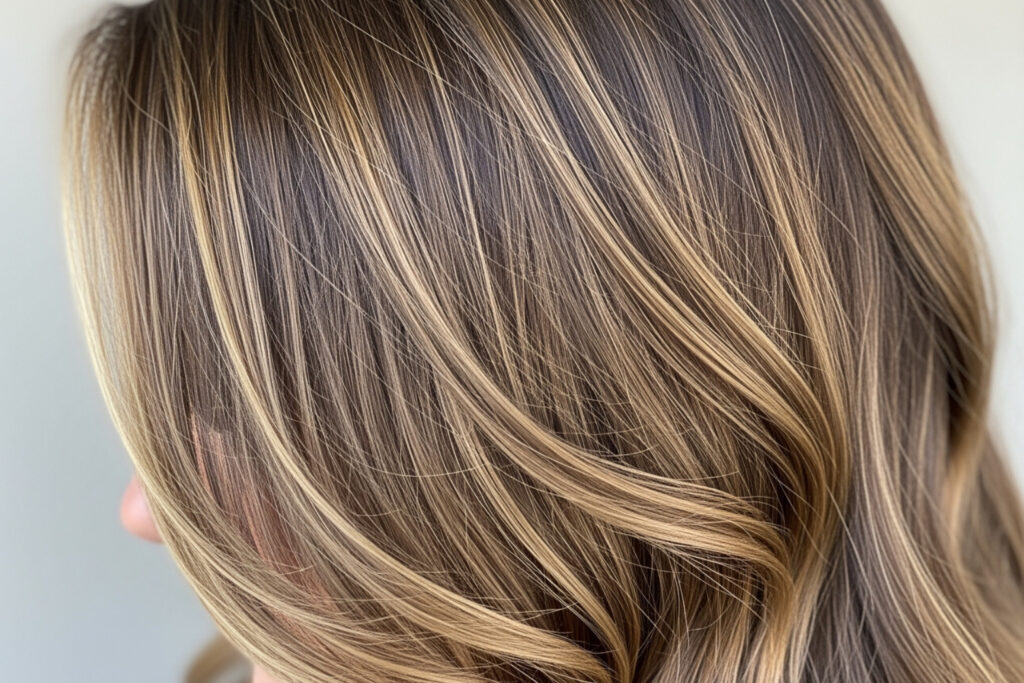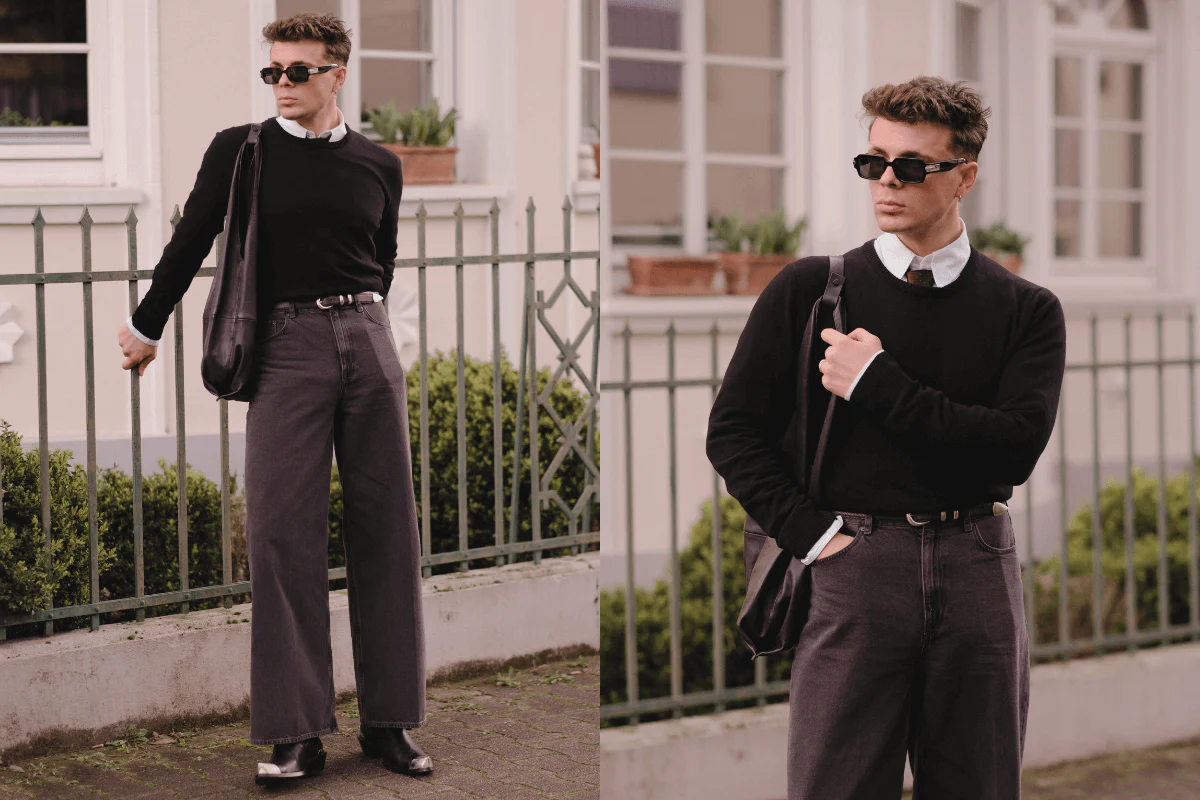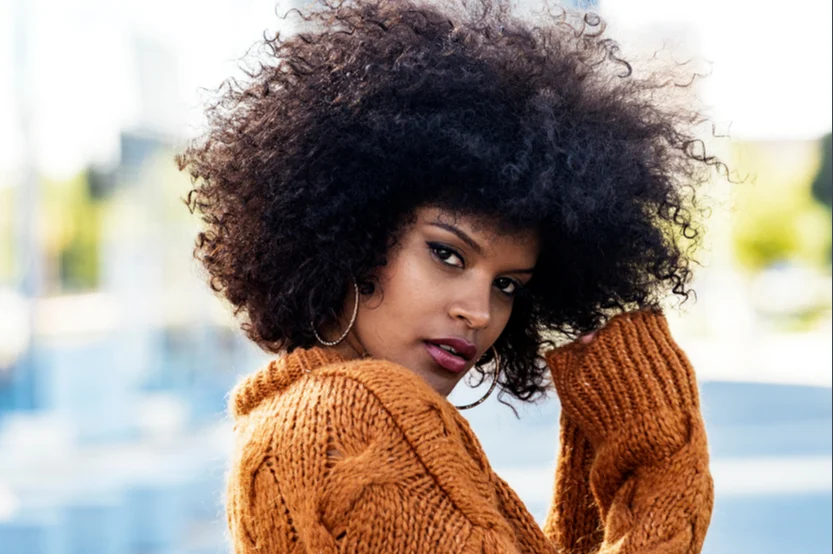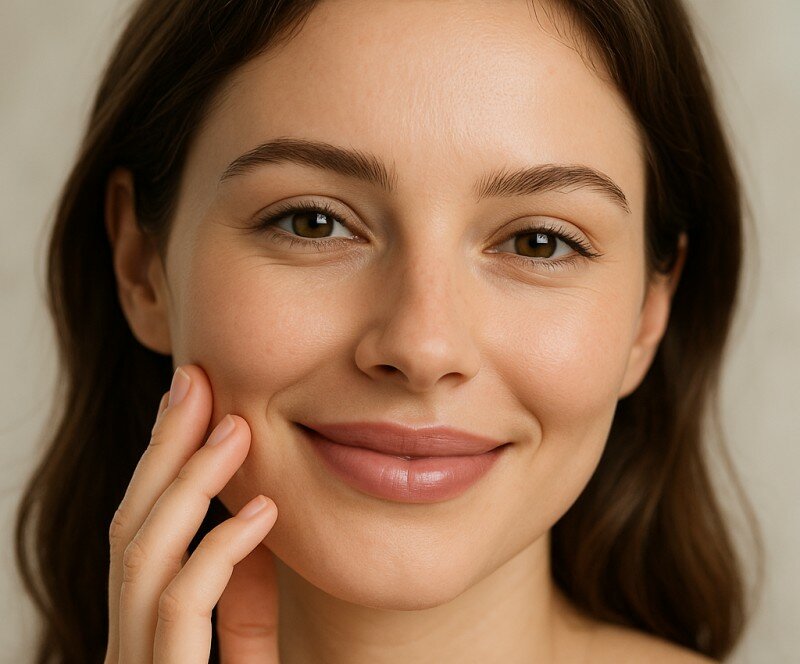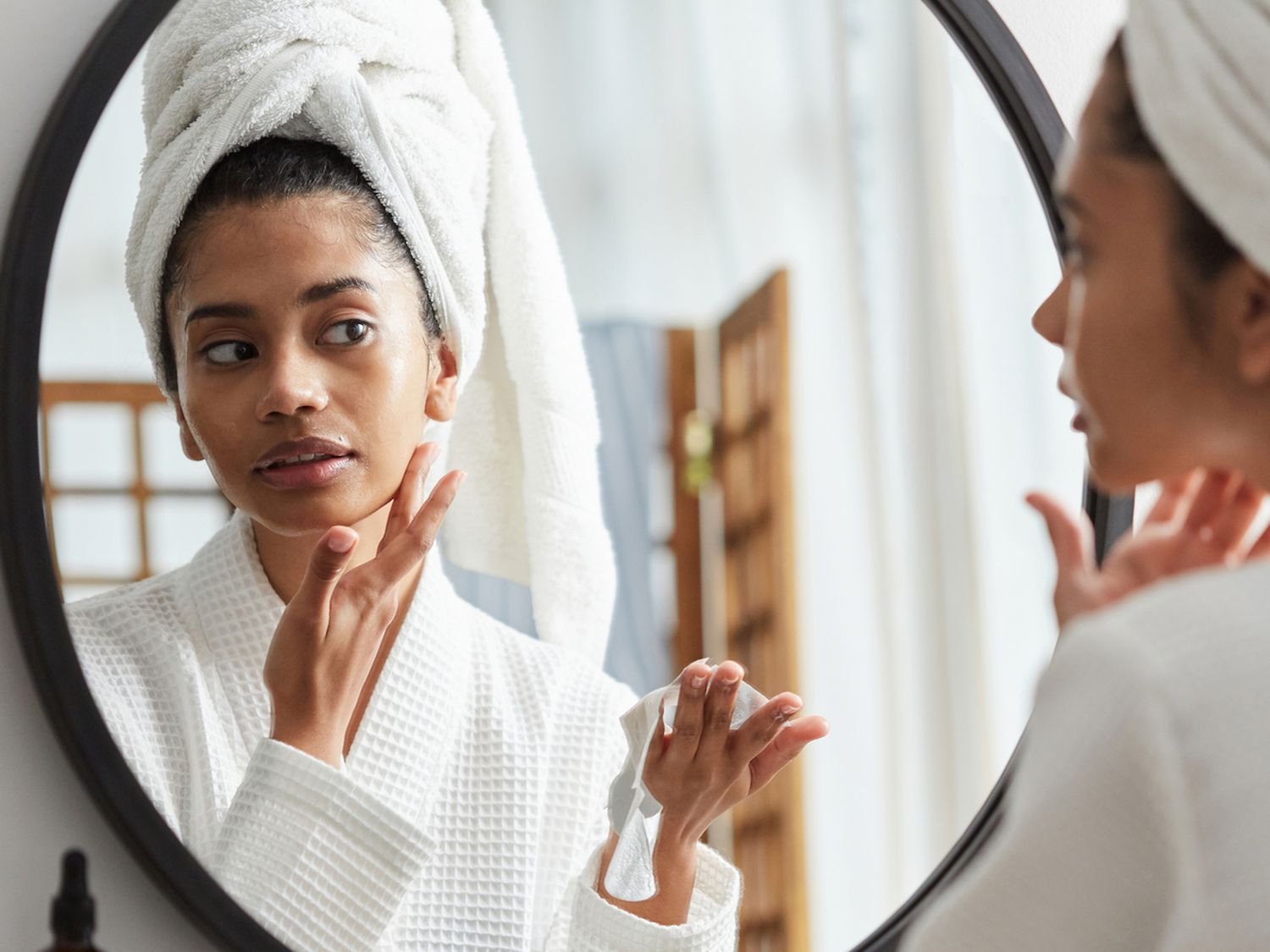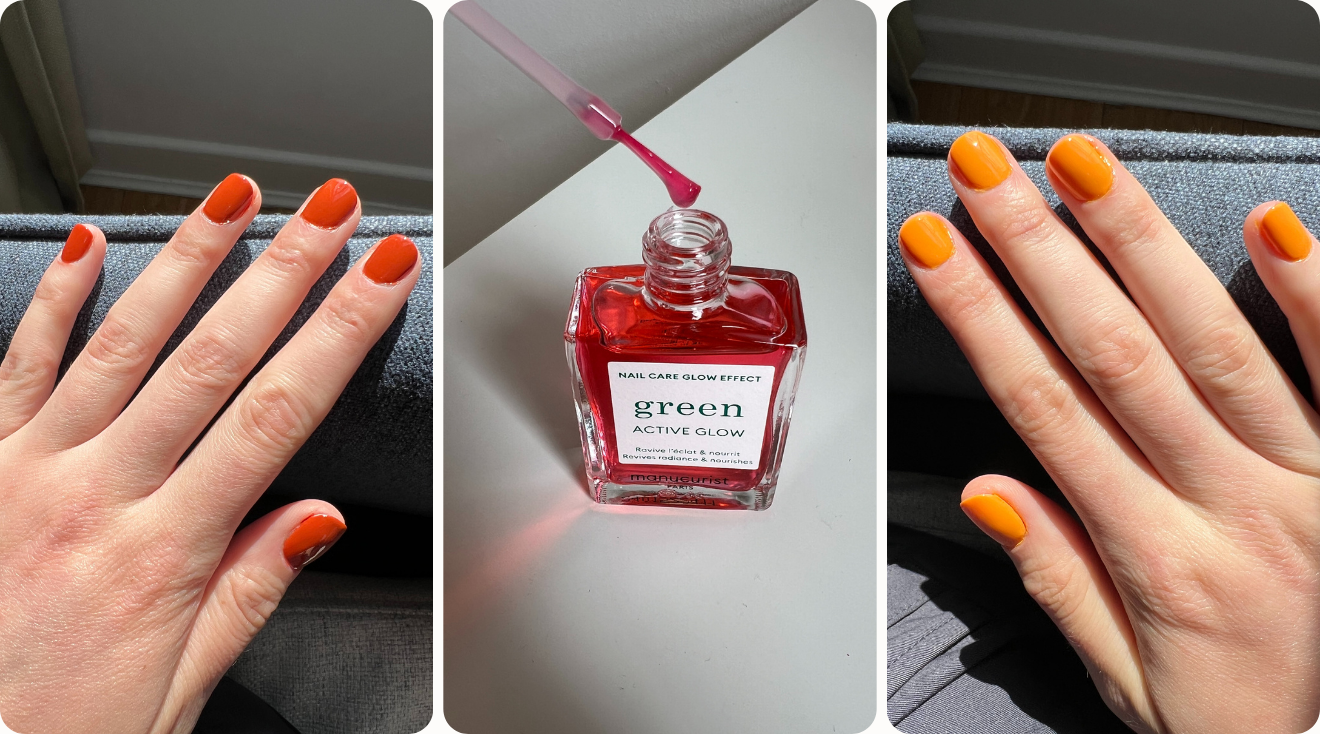Why Natural Highlight Techniques Are Changing Hair Care
Naturally Lit: How to Achieve Beautiful Natural Highlights
Natural highlight techniques offer a gentle, eco-friendly way to add dimension to your hair without harsh chemicals. From professional balayage to DIY methods using lemon juice, these techniques create beautiful, sun-kissed results that grow out gracefully.
Quick Guide to Natural Highlight Techniques:
- Professional Methods: Balayage, babylights, and teasylights for seamless, hand-painted results.
- DIY Ingredients: Lemon juice, honey, chamomile tea, and cinnamon for gradual lightening.
- Best For: Light brown to blonde hair, fine textures, and virgin (uncolored) hair.
- Results: Subtle dimension that mimics natural sun exposure.
- Duration: 6-12 weeks for professional highlights; ongoing for DIY methods.
As one beauty expert notes, “Natural highlights add dimension without dramatic changes, improve natural hair texture, and avoid harsh chemicals, minimizing damage and maintaining hair health.”
The beauty industry is shifting toward these gentler approaches. Unlike traditional bleaching, natural highlighting works with your hair’s existing color to create authentic-looking dimension. This makes it ideal for those who want low-maintenance color that doesn’t require frequent touch-ups.
For those with darker hair, natural methods may reveal red or orange undertones. It’s key to understand which technique works best for your hair type and color goals before you begin.
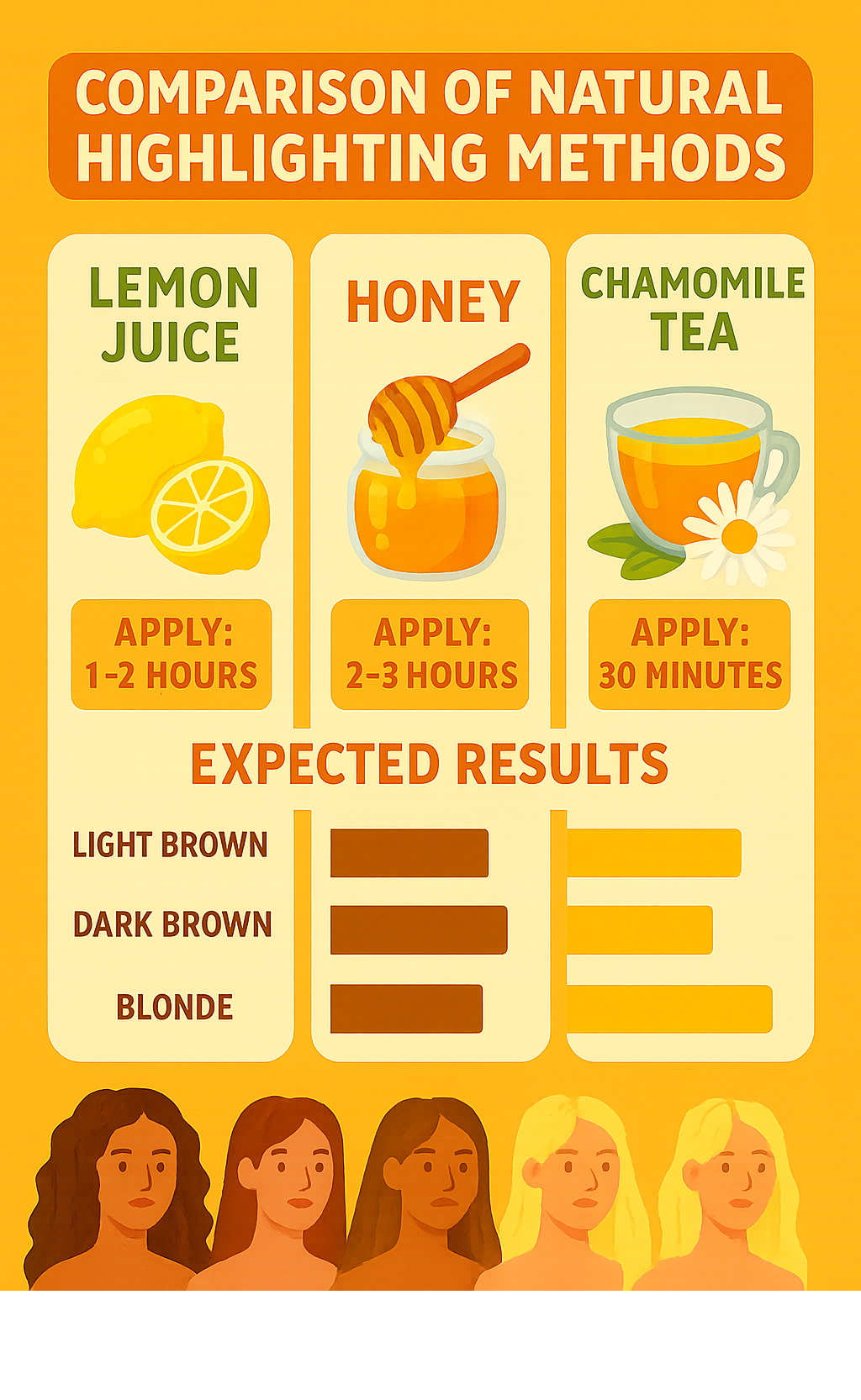
Relevant articles related to natural highlight techniques:
Understanding Natural Highlights: The Art of Sun-Kissed Hair
Natural highlight techniques aim to recreate the way sunlight naturally kisses your hair. Instead of harsh streaks, these methods work with your existing color to create effortless dimension. The goal is a subtle improvement that looks authentic, mimicking sunlight to add gentle brightness, depth, and dimension.
This approach is popular because it offers low-maintenance beauty. Since the highlights blend seamlessly with your natural shade, the grow-out process is nearly invisible. You can avoid frequent salon visits as the color fades gracefully.
Your hair’s health also benefits. Traditional bleaching can leave strands brittle, but natural highlight techniques work with your hair, preserving its integrity while adding depth and dimension. This means softer, shinier hair that feels healthier. The process improves natural texture without masking your hair’s unique characteristics, whether it’s fine and straight or thick and wavy.
These techniques offer a chemical-free alternative to traditional highlighting. By using gentle ingredients or minimal processing, you prioritize your hair’s long-term health. To learn more about nurturing your beauty from within, explore our guide on DIY Natural Skincare.
Professional Natural Highlight Techniques for Flawless Results
While DIY methods have their charm, professional natural highlight techniques offer a level of precision and customization that’s difficult to achieve at home. A skilled stylist can create a perfect, sun-kissed look that appears effortlessly natural.
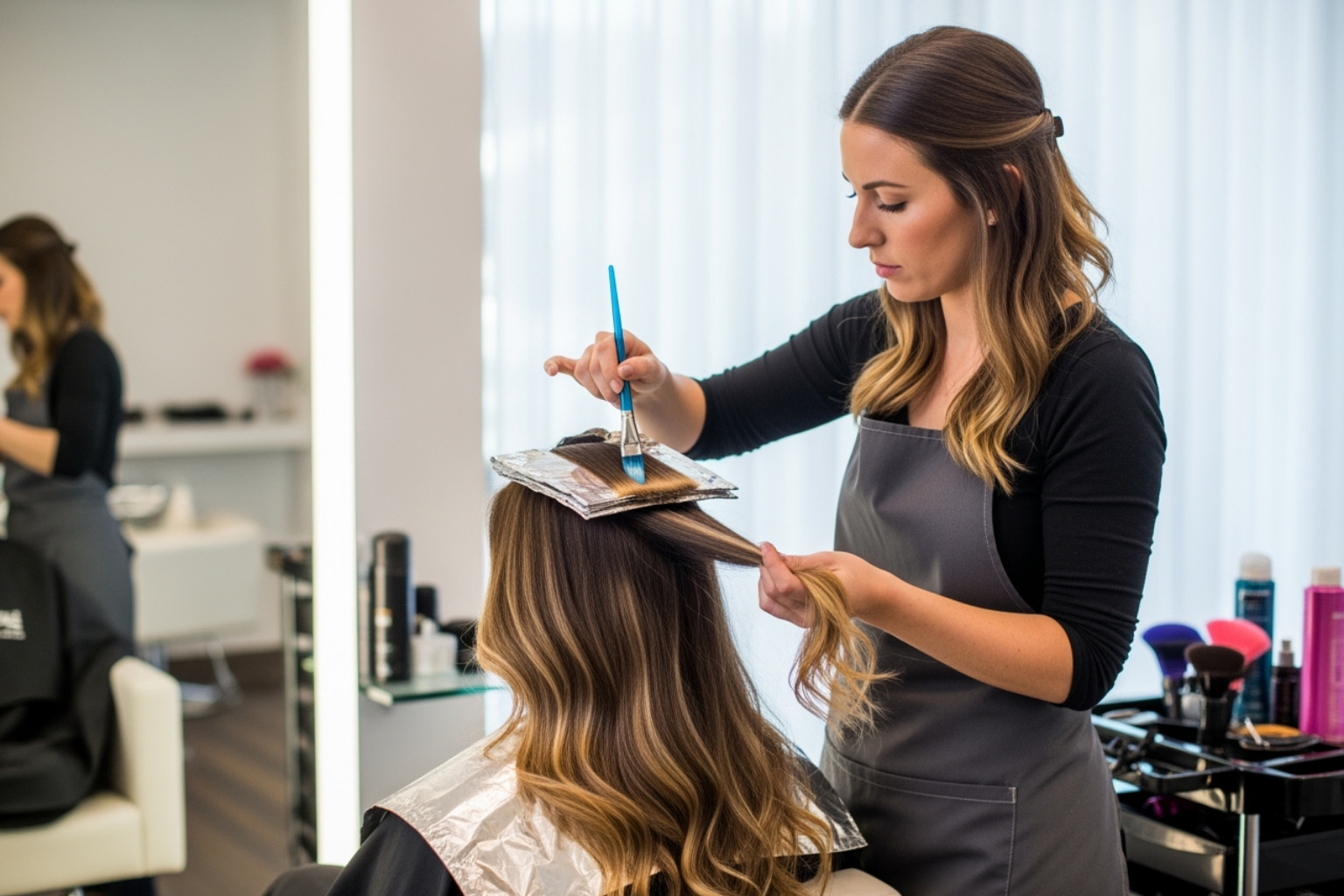
Consider a salon appointment if you want a dramatic change or have previously colored hair, as a professional can handle color correction and ensure hair health. A colorist also provides expert shade selection to complement your skin tone and understands how highlights will interact with your hair’s undertones.
Balayage: The Freehand Painting Method
Balayage, French for “to sweep,” is a technique where a stylist hand-paints lightener onto the hair’s surface. This creates a seamless gradient that mimics natural sun exposure. The customized placement results in a sun-drenched effect with soft dimension that grows out beautifully without harsh lines. Balayage is famously low-maintenance, allowing for months between touch-ups.
Babylights: Delicate and Ultra-Subtle Streaks
For ultimate subtlety, babylights are the answer. These tiny highlights are woven through very fine sections of hair to create the delicate, natural dimension of childhood hair. The technique produces a soft, diffused, and blended color effect that adds gentle brightness. Babylights are stunning on all hair colors, especially for brunettes seeking warmth, as the result mimics childhood hair with its natural variation.
Teasylights: Soft, Blended, and Low-Maintenance
Teasylights combine the natural look of balayage with the coverage of traditional highlights. The technique involves teasing hair before application, which creates a beautifully diffused color. Lightener is applied to the un-teased mid-lengths and ends, creating a soft transition from roots and eliminating harsh regrowth lines. This seamless blending ensures the style looks natural for months, making it ideal for those who want noticeable dimension with a relaxed maintenance schedule.
Your DIY Guide to Highlighting with Natural Ingredients
You can try natural highlight techniques at home using ingredients from your kitchen. These gentle methods work gradually, so patience is key. Unlike harsh chemicals, these ingredients work with your hair’s structure, but results will vary based on your natural color. Always perform a patch test on a small, hidden section first.
Step-by-Step Natural Highlight Techniques at Home
Lemon juice is a classic natural lightener. Its citric acid, when activated by heat, opens hair cuticles and gently lifts pigment.
Mix fresh lemon juice and water in a spray bottle, using a two-to-one ratio (two parts juice to one part water). For dry hair, add conditioner to the mix. Apply to damp hair, either spraying all over or using a cotton ball for specific strands. Sit in the sun for 30 to 45 minutes to activate the lightening properties. Afterward, rinse thoroughly and use a deep conditioner, as lemon juice can be drying.
For more natural beauty insights, explore our blog on More on natural beauty.
Honey and Cinnamon: A Sweet and Gentle Lightener
This combination offers a gentler approach that also conditions your hair. Raw honey contains trace amounts of hydrogen peroxide, a mild lightening agent, while cinnamon improves the effect and adds warm tones.
Mix two tablespoons of raw honey with one tablespoon of cinnamon powder. Add a tablespoon of olive oil or conditioner to make it spreadable and let the mixture sit for 30 minutes to activate. Apply the mask to damp hair, cover with a shower cap, and leave it on for at least four hours or overnight for more noticeable results. This method is deeply conditioning and great for dry hair.
Chamomile Tea Rinse: A Brightening Boost for Blondes
Chamomile tea is excellent for blonde or light brown hair, creating a subtle golden brightening effect. It contains quercetin, a flavonoid that inhibits melanin production.
Brew a strong cup of chamomile tea (three to four tea bags per cup) and let it cool completely. After shampooing and conditioning, pour the tea over your hair, ensuring it’s fully saturated. Leave it on for 30 minutes to an hour, or let it air dry in the sun for better results. This method is very gradual and requires consistent use.
Find more ways to accept natural beauty with our insights on Natural Makeup.
Other natural ingredients to try include crushed vitamin C tablets mixed with water, saltwater spray, or a diluted apple cider vinegar rinse. Natural methods require patience and consistency to achieve beautiful, subtle highlights.
The Essentials: Suitability, Risks, and Aftercare
Before trying natural highlight techniques, it’s crucial to understand suitability, risks, and aftercare to ensure beautiful, healthy results.
Who Can Try DIY Natural Highlight Techniques?
DIY natural highlighting works best on certain hair types. You’ll see the best results on naturally light brown to blonde hair. Fine hair texture and virgin hair (uncolored or chemically untreated) are also ideal, as they respond well to gentle lightening.
For those with darker hair, be aware that natural methods often reveal red or orange undertones. Natural ingredients aren’t strong enough to lift past these warm pigments to achieve true blonde highlights. This is why patch testing on a small, hidden section of hair is crucial to preview the results and avoid surprises.
Potential Risks and How to Avoid Them
While natural, these ingredients are not risk-free if used incorrectly.
- Hair dryness is the most common issue, especially with lemon juice. Always dilute it with water or conditioner to create a gentler formula.
- Brassy tones are a concern for darker hair. If you end up with unwanted orange or red hues, a professional colorist can correct the color with a toner.
To avoid damage, be patient and use these methods no more than once or twice a week, always following with a deep conditioning treatment. For protection from the sun, which some methods require, see our guide on protecting hair from UV damage.
Caring for Your Naturally Highlighted Hair
Proper aftercare is key to maintaining your highlights and hair health for the typical 6-12 week touch-up period.
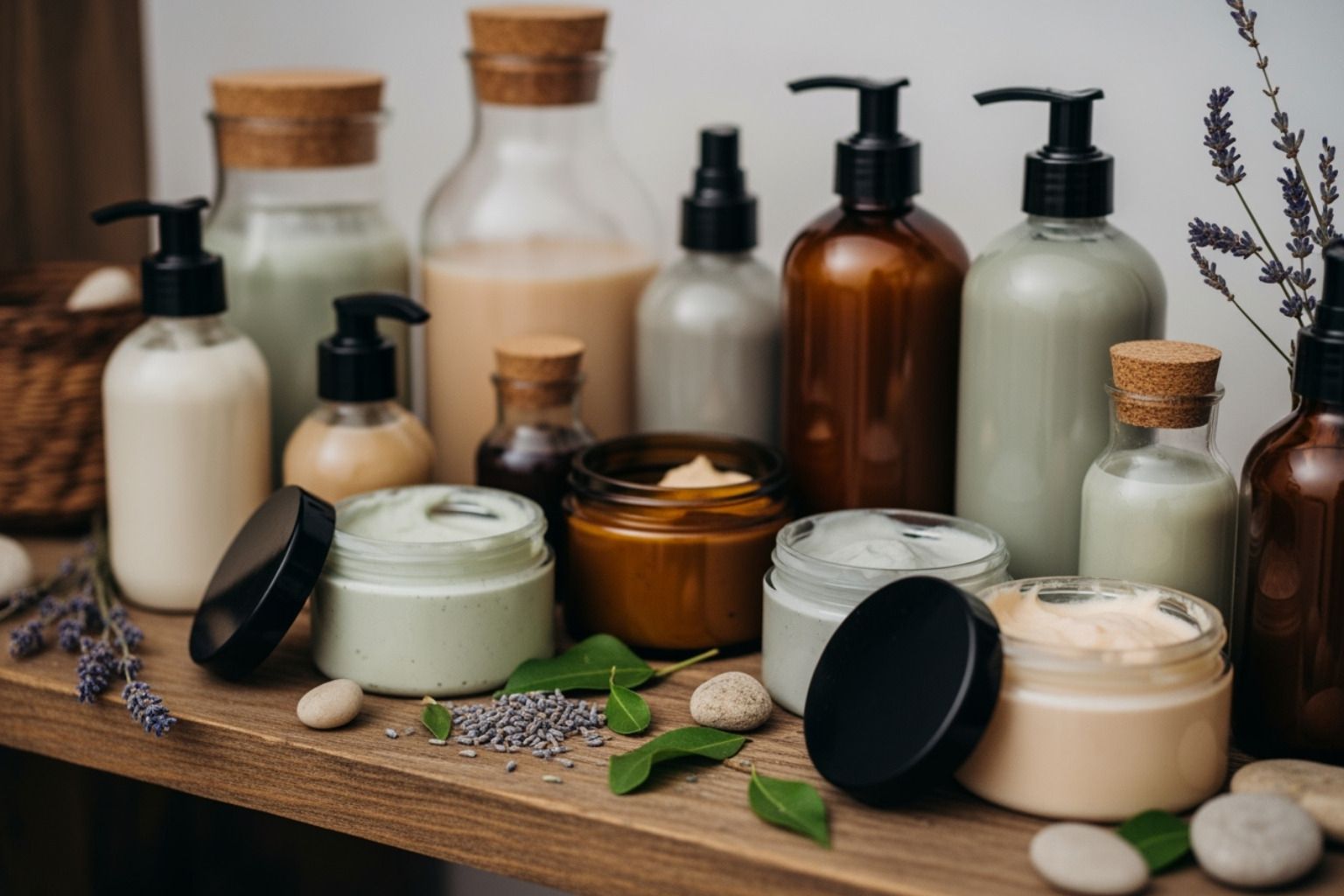
- Use sulfate-free products: These gentle cleansers won’t strip natural oils or fade your highlights.
- Do weekly deep conditioning: This restores moisture and protein to keep hair strong and shiny.
- Minimize heat styling: Air-dry when possible and always use a heat protectant spray.
- Use UV protectant sprays: The sun can cause damage and fading. A leave-in conditioner with UV protection or a hat helps.
- Get regular trims: Trimming your hair every 6-8 weeks removes split ends and keeps it looking polished.
Faking It: Creating the Illusion of Highlights with Styling
Sometimes the most beautiful natural highlight techniques don’t involve any color at all! If you’re not ready to commit to lightening your hair but still want that gorgeous, dimensional look, strategic styling can work absolute magic. These clever tricks use light and shadow to create the illusion of sun-kissed strands, giving you temporary effects that change with your mood and outfit.
The secret lies in understanding how light interacts with different textures and patterns in your hair. When you create contrast through styling, you’re essentially mimicking what highlights do naturally – making some sections appear brighter while others recede into shadow. It’s like having a photography lighting setup right on your head!
Strategic Waves and Curls
Beachy waves are perhaps the ultimate highlight faker. When your hair has texture and movement, light bounces off the raised sections while the valleys between waves create natural shadows. This interplay creates the perfect illusion of dimensional color without a single drop of lightener.
Start with a good texturizing spray on damp hair – this will give you that perfectly imperfect, lived-in texture that catches light beautifully. Scrunch your hair as it air-dries, or use a diffuser if you’re in a hurry. The key is avoiding that too-perfect, uniform look that can appear flat under light.
For those with naturally straight hair, don’t worry! You can create this effect with a curling iron or even by braiding slightly damp hair overnight. The goal isn’t tight, uniform curls but rather loose, varied waves that move naturally. How light reflects on textured hair is truly remarkable – each curve and bend creates a new opportunity for brilliance.
Curl manipulation works especially well for those with naturally curly or coily hair. Your natural texture already has incredible dimension built in. Try gently separating larger curl clumps into smaller sections, or use your fingers to lift and fluff certain areas. This reveals the beautiful variations in tone that were always there, just waiting to catch the light.
Braids and Updos for Dimension
There’s something almost magical about how braids create patterns of light and shadow. When you weave hair together, you’re creating a three-dimensional sculpture that highlights certain strands while others retreat. It’s like having a natural spotlight system built into your hairstyle.
Fishtail braids are particularly stunning for this effect. The intricate weaving pattern creates countless opportunities for light to catch and reflect, making your hair appear to shimmer with hidden highlights. Each section of the braid catches light differently, creating a beautiful play of brightness and depth.
Crown braids work similarly, but they frame your face in a way that draws attention to the dimensional effect. As you braid around your head, you’re creating a halo of texture that appears to glow from within. The contrast between the braided sections and any loose hair creates even more visual interest.
Even simple updos can work wonders. Try loosely gathering your hair into a low bun, but leave some pieces deliberately messy and textured. The contrast between the smooth, gathered sections and the deliberately tousled pieces creates natural-looking dimension that rivals any professional highlight job.
The beauty of these no-color options is their versatility. You can experiment freely, knowing that tomorrow you can try something completely different. Plus, you’re working with your hair’s natural characteristics rather than fighting against them – and that always looks more authentic and effortless.
Frequently Asked Questions about Natural Highlights
We love chatting with our community about natural highlight techniques, and some questions come up again and again. Let’s explore the most common concerns we hear, so you can feel confident about your highlighting journey.
How long do natural highlights last?
The answer really depends on which route you choose. Professional natural highlights like balayage or babylights typically give you that gorgeous, sun-kissed look for about 6 to 12 weeks before you’ll want a touch-up. The beauty of these techniques is that they’re designed to grow out gracefully – no harsh roots or obvious color lines that scream “I need a salon visit!”
DIY methods using natural ingredients work quite differently. Think of them as more of a gentle, ongoing relationship with your hair rather than a one-and-done deal. The lightening effects from lemon juice or chamomile tea will gradually fade with each wash, which means you’ll need to reapply consistently to maintain that brightened look. It’s less about achieving permanent change and more about nurturing a continuous, subtle improvement.
Do natural ingredients actually damage hair?
Here’s where we need to have an honest conversation. While natural ingredients are generally gentler than harsh chemicals, they’re not completely risk-free. The truth is, anything that changes your hair’s natural structure – even subtly – has the potential to cause some damage if not used thoughtfully.
Lemon juice is probably the biggest culprit here. Its acidity can be quite drying, and if you go overboard or skip the dilution step, you might end up with brittle, straw-like hair. We’ve seen people leave undiluted lemon juice on their hair for hours in the sun, essentially “cooking” their strands. Not the look we’re going for!
Even seemingly innocent ingredients like honey work by releasing tiny amounts of hydrogen peroxide, which means any lightening process involves breaking down hair pigment to some degree. The key is being smart about it – always dilute acidic ingredients, follow up with deep conditioning treatments, and remember that patience is your best friend. Natural methods work gradually, and trying to rush the process is where damage typically happens.
Can I use these methods on previously color-treated hair?
This is where we always recommend hitting the pause button and having a chat with a professional stylist first. Using DIY natural highlight techniques on previously colored hair can be like mixing unknown chemicals in a lab – you never quite know what reaction you’ll get.
Chemical dyes change your hair’s internal structure, and when you introduce natural lighteners into the mix, things can get unpredictable fast. We’ve seen lemon juice turn chemically colored hair everything from brassy orange to an unfortunate green tint. Sometimes the hair becomes overly porous, leading to uneven color absorption and further damage.
If your hair has any previous color treatment, a strand test is absolutely essential before trying any DIY method. But honestly? For the best results and to avoid any hair disasters, consulting a professional is usually your safest bet. They can assess your hair’s history and current condition, then guide you toward the most effective approach – whether that’s professional techniques or helping you transition back to your natural color first.
Your hair’s health should always come first. It’s better to take the slower, safer route than to end up with damaged strands that need months of recovery treatments.
Conclusion
The journey through natural highlight techniques reveals a world of possibilities for enhancing your hair’s natural beauty without compromising its health. From the artistry of professional methods to the gentle DIY approaches using ingredients from your kitchen, these techniques offer something for everyone seeking that perfect sun-kissed glow.
Professional techniques like balayage create seamless, hand-painted highlights that grow out gracefully, while babylights and teasylights offer ultra-subtle dimension that mimics childhood hair. These salon methods provide precision and customization that’s hard to achieve at home, especially for complex color histories or dramatic changes.
For those who prefer the DIY route, natural ingredients like lemon juice, honey and cinnamon, and chamomile tea offer gradual lightening that works with your hair’s natural structure. These methods require patience and consistency, but they reward you with gentle results that feel authentically yours.
The key to success with any natural highlighting approach lies in understanding your hair type and choosing methods that suit your lifestyle. Light brown to blonde hair responds beautifully to DIY methods, while darker hair often benefits from professional expertise to avoid unwanted brassiness. Proper aftercare – including sulfate-free products, weekly deep conditioning, and UV protection – is essential for maintaining both your highlights and your hair’s overall health.
At Beyond Beauty Lab, we’re passionate about empowering you with knowledge that leads to informed beauty choices. Whether you choose professional artistry or gentle DIY methods, the beauty of natural highlights lies in their ability to improve rather than mask your natural color. They offer a low-maintenance way to add dimension and radiance while keeping your hair healthy and strong.
Your hair tells your story, and natural highlighting techniques help you write that story with confidence and authenticity. Ready to explore more ways to nurture your natural beauty? Explore our clean beauty product guides to find more gentle, effective approaches to wellness and beauty.

